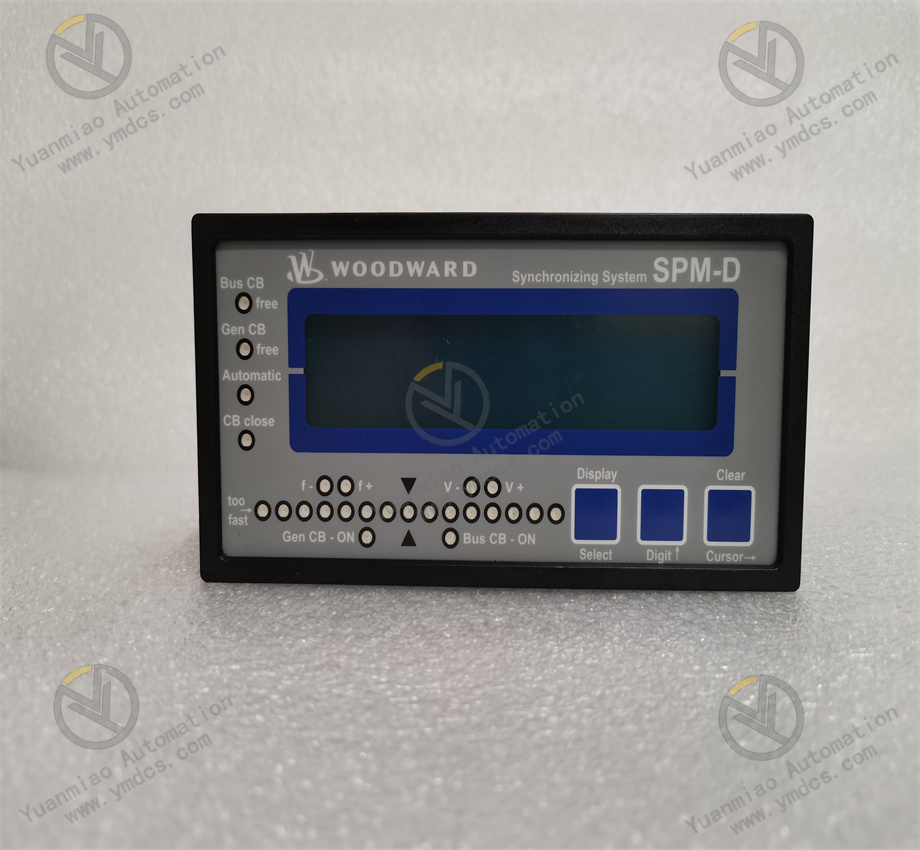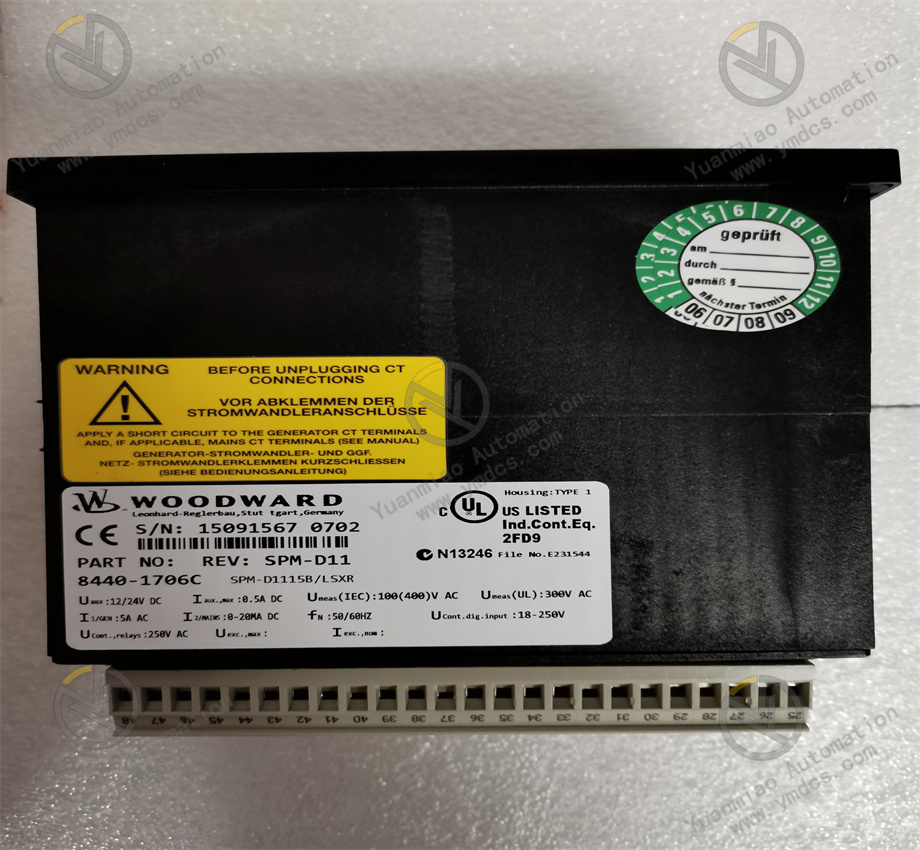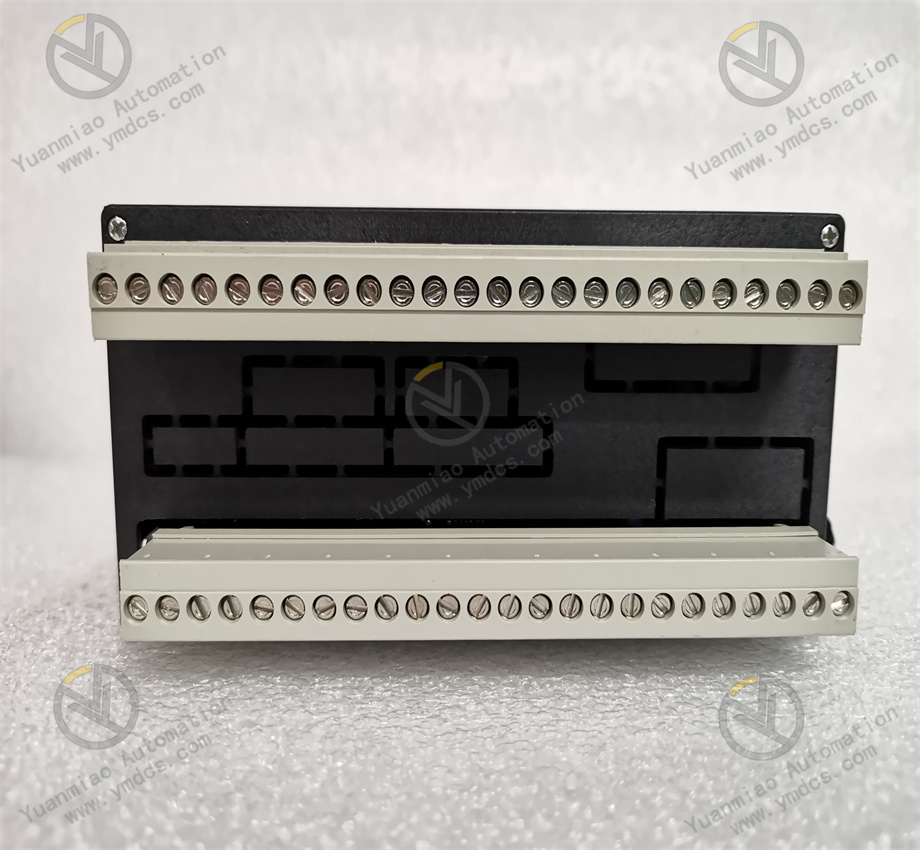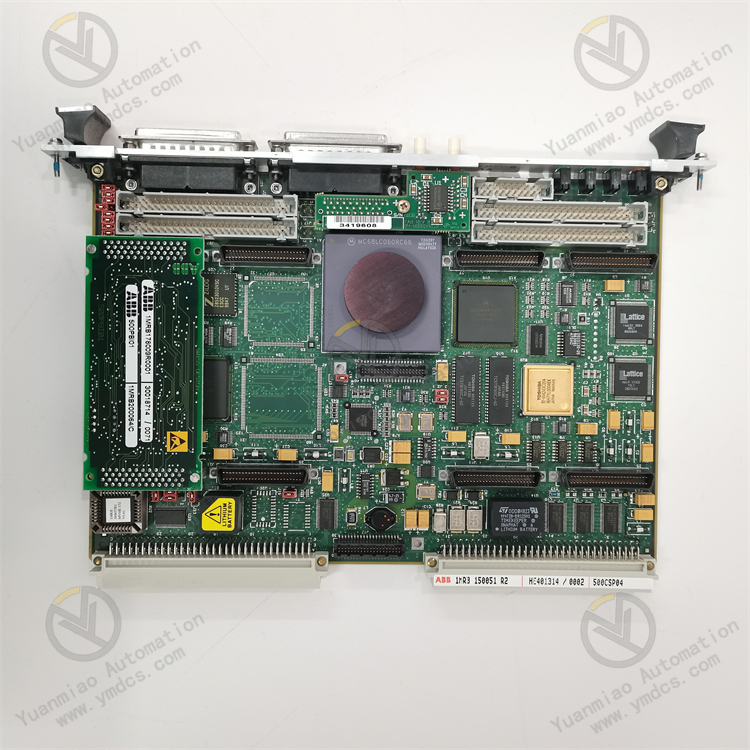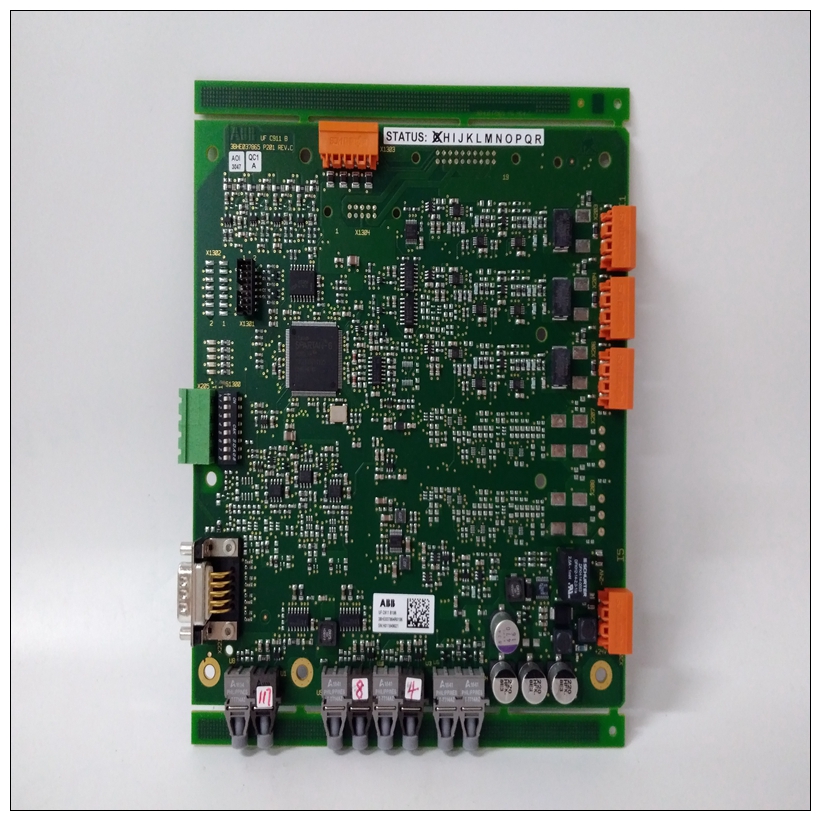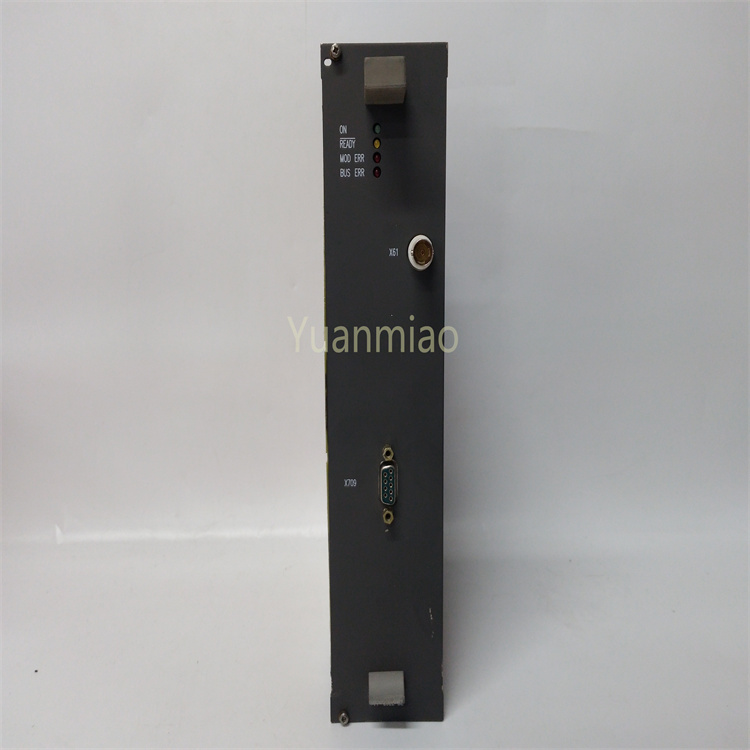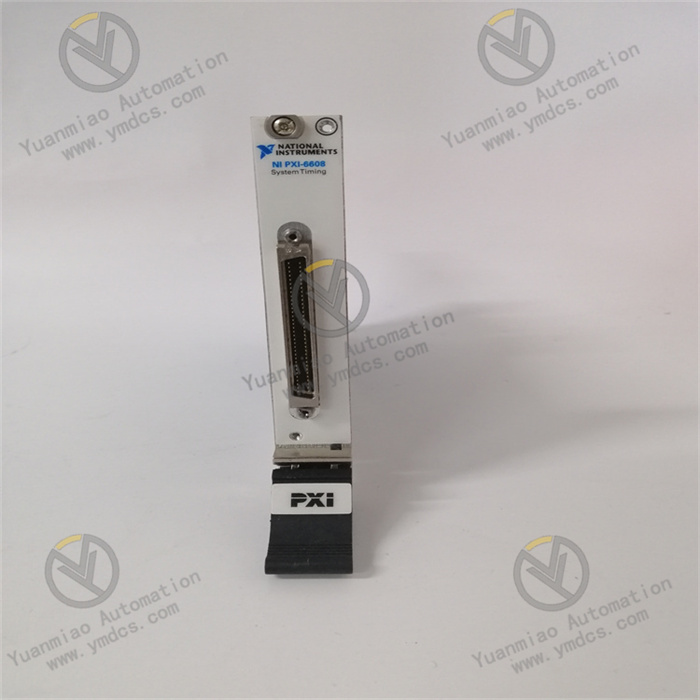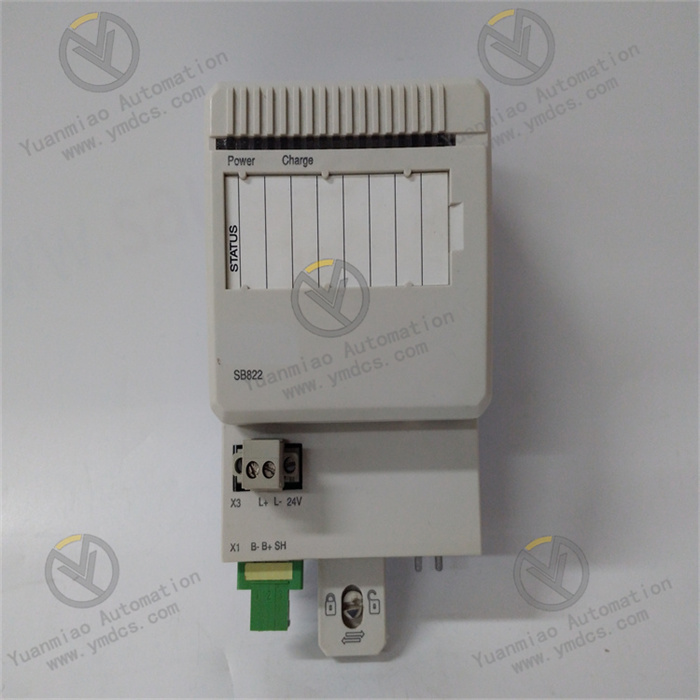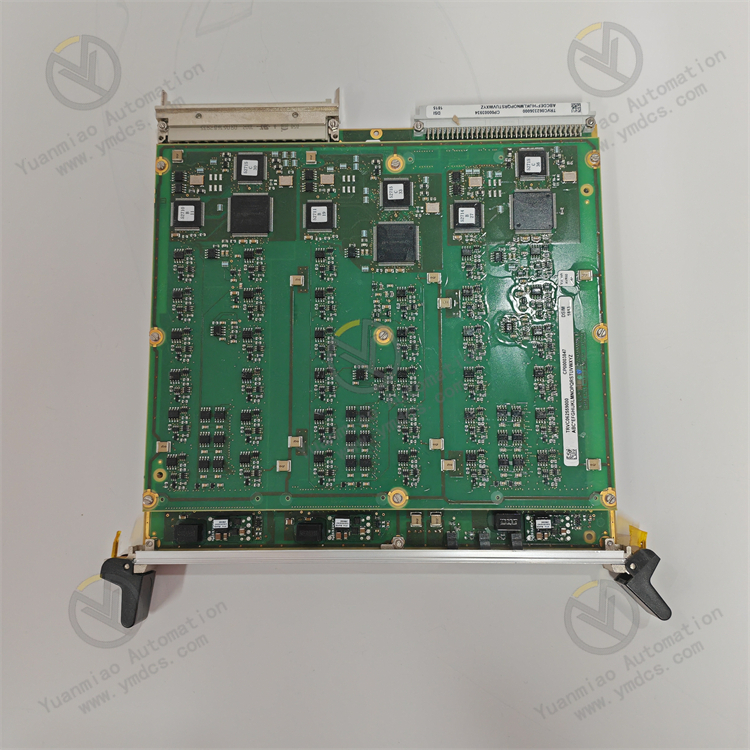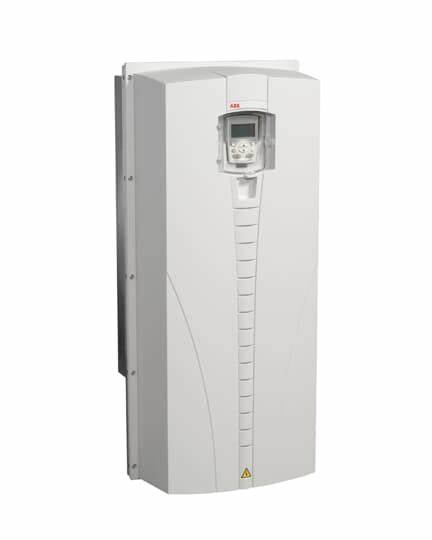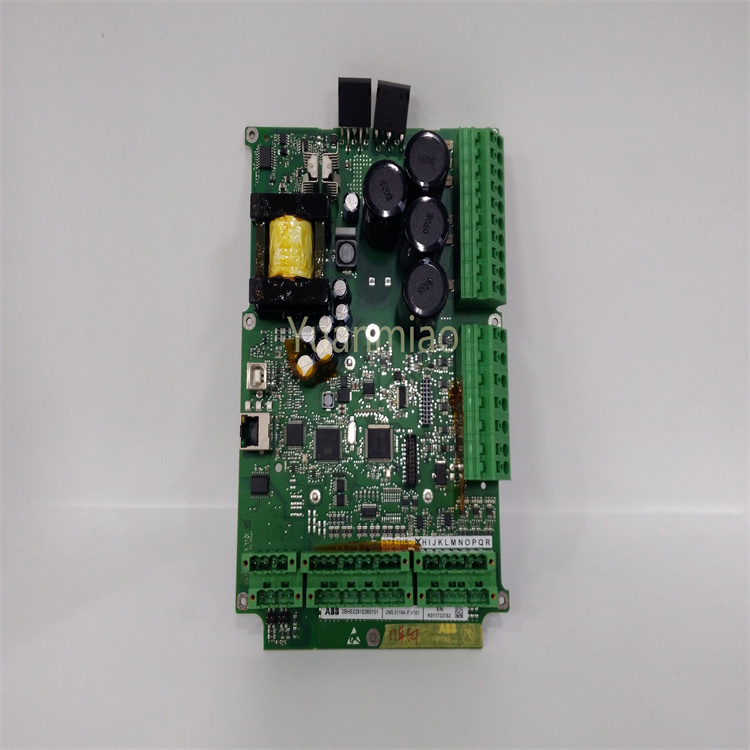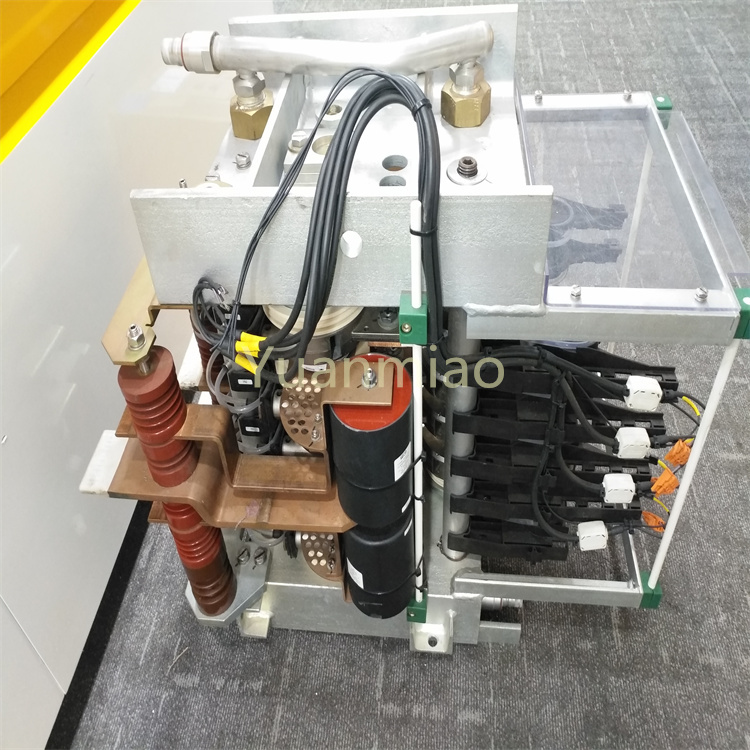Description
WOODWARD SPM-D11 8440-1706
The WOODWARD SPM-D11 8440-1706 is a microprocessor-based synchronizer primarily used for single-phase or three-phase AC generators equipped with Woodward or other compatible speed controls and automatic voltage regulators. This synchronizer can provide analog or switch output bias signals for automatic control functions such as frequency, phase angle, and voltage matching. It features one circuit breaker control, automatic load distribution, power factor control, and generator set protection functions. It also has a two-line LCD display for showing operational parameters and alarms, multi-level password protection for parameters, and supports English and German.
The SPM-D11 8440-1706 is a digital speed/process controller module mainly used for speed control, load distribution, and process parameter adjustment of rotating machinery such as steam turbines, gas turbines, and compressors. Its core functions include:
- Speed Control: Precisely adjusts the speed of prime movers (such as steam turbines) to ensure the unit operates stably at the set speed (e.g., grid synchronization or single-unit constant speed).
- Load Distribution: Automatically distributes active loads during parallel operation of multiple units to maintain grid frequency stability.
- Process Parameter Control: Supports closed-loop control of process parameters such as pressure, temperature, and flow (e.g., steam pressure regulation, fuel flow control).
- Protection and Interlocking: Built-in logic for overspeed protection, load limiting, fault shutdown, etc., to ensure equipment safety.
Features
- High-Precision Control Capability
- Digital Algorithm: Uses advanced PID (Proportional-Integral-Derivative) control algorithm with self-tuning parameters, fast response (adjustment cycle up to millisecond level), and control accuracy of ±0.1% of rated speed.
- Multi-Mode Switching: Supports seamless switching between speed control mode, power control mode, and process parameter control mode to adapt to different working conditions (e.g., unit startup, grid-connected load carrying, isolated network operation).
- Flexible Input/Output Configuration
- Analog Output: 4–20 mA or 0–10 V DC for driving actuators (e.g., electro-hydraulic servo valves, frequency converters).
- Digital Output: Relay contacts (e.g., alarm, shutdown signals), supporting dry contacts or solid-state relay outputs.
- PWM Output: Optional pulse width modulation signal for controlling solenoid valves or stepper motors.
- Speed Signal: Supports reluctance or photoelectric speed sensors (frequency input, e.g., 0–10 kHz).
- Process Signal: Analog input (e.g., 4–20 mA, 0–10 V DC) for collecting parameters such as pressure and temperature.
- Digital Input: Supports switch signals (e.g., start/stop commands, mode switching signals).
- Input Types:
- Output Types:
- Communication and Integration Capability
- Industrial Communication Protocols: Supports Modbus RTU/ASCII, Ethernet/IP, PROFINET, etc., for real-time data interaction with DCS (Distributed Control System), PLC, or host computers (e.g., Woodward Insight software).
- Modular Expansion: Can be combined with other SPM series modules (e.g., I/O modules, synchronization modules) via backplane buses to build complex control systems.
- High-Reliability Design
- Hardware Redundancy: Supports dual-power redundancy and disturbance-free switching between master and standby controllers (requires redundant modules) to ensure continuous operation in critical scenarios.
- Anti-Interference Capability: Uses industrial-grade components, complies with IEC 61000 electromagnetic compatibility (EMC) standards, and adapts to strong electromagnetic interference environments (e.g., power plants, petrochemical sites).
- Fault Self-Diagnosis: Built-in watchdog timer, power monitoring, sensor disconnection detection, etc., with real-time feedback of fault codes via LED indicators or communication interfaces.
- Convenient Operation and Maintenance
- User-Friendly Interface: Supports local button operation or parameter configuration, trend monitoring, and fault analysis via Woodward Compass software.
- Online Debugging Function: Allows modification of control parameters without interrupting operation and real-time observation of adjustment effects.
- Data Recording and Playback: Built-in historical data storage supports pre-fault/post-fault waveform capture for accident analysis.
- Wide-Range Adaptability
- Power Compatibility: Supports 24 V DC or 100–240 V AC input, adapting to different industrial power environments.
- Environmental Tolerance: Operating temperature range of -40°C to +70°C, protection level up to IP20 (standard), with optional higher protection models for harsh environments (e.g., dust, humid scenarios).
Technical Parameters
- Power Supply Parameters
- Operating voltage: 8 to 32 VDC.
- Maximum power consumption: 18W.
- Measurement Parameters
- Voltage AC input: 120 VAC/240 VAC true RMS, accuracy class 0.1.
- Current AC input: 5 A true RMS, accuracy class 0.5.
- Input/Output Parameters
- Discrete input: 18 to 40 VDC, 10 mA.
- Relay driver output: 18 to 40 VDC at 200 mA sink.
- Analog input: 4 to 20 mA/1 to 5 VDC.
- Analog output: Speed deviation ±2.5 VDC, 0.5 to 4.5 VDC, 1 to 5 VDC across 243 ohms, or 500 Hz PWM; voltage bias up to ±9 VDC, as low as ±3 VDC.
- Environmental Parameters
- Operating temperature: -40°C to 70°C.
- Storage temperature: -55°C to 105°C.
- Environmental humidity: 95% at 38°C.
- Other Parameters
- Dimensions: 264×461×58 mm.
- Housing: Backplate-mounted metal plate housing.
Working Principle
The SPM-D11 (Model: 8440-1706) module achieves protection functions through multiple sensor inputs, logical operations, and trip outputs. Its core logic is based on a 2-out-of-3 voting mechanism (2oo3 Voting) to ensure the reliability and anti-interference capability of protection actions.
- Sensor Signal Acquisition
The module receives three types of key sensor signals from the steam turbine: - Input channels support hardware filtering (e.g., noise filtering, frequency screening) to reduce electromagnetic interference (EMI) and signal distortion.
- Redundant input design (e.g., three-way speed signals) provides multi-source data for subsequent voting logic.
- Speed Sensor (Reluctance or Photoelectric): Measures rotor speed to determine if it exceeds the trip threshold (e.g., 110%–112% of rated speed).
- Axial Displacement Sensor (Eddy Current Sensor): Monitors rotor axial displacement to prevent rubbing between moving and stationary parts.
- Vibration Sensor (Velocity or Accelerometer): Collects shaft vibration or casing vibration signals to evaluate mechanical health.
- Signal Processing Features:
- 2oo3 Voting Logic (Core Protection Mechanism)
The SPM-D11 achieves high-reliability protection based on a triple-redundancy architecture: - Example: If two of the three speed signals exceed the overspeed threshold (e.g., 3300 rpm), the module outputs a trip signal.
- Signal Redundancy: The same physical quantity (e.g., speed) is collected by three independent sensors and input into three independent channels of the module.
- Logical Voting: The module compares three-way signals in real time. When at least two signals exceed the preset threshold, it is determined as a real fault, triggering a trip command.
- Advantage: Avoids single-sensor failure or single-channel false triggering, complying with the SIL-level system requirements of the IEC 61508 functional safety standard.
- Trip Output and Execution
When the voting logic determines a fault, the module executes protection actions through the following methods: - Trip output channels support fail-safe design, i.e., default trip triggering when the module loses power to ensure safety.
- Relay contact capacity is typically 5A/250V AC, meeting industrial-grade load requirements.
- Relay Output: Drives trip solenoids or shutdown mechanisms to quickly cut off steam turbine steam intake for emergency shutdown.
- Digital Signal Output: Sends fault alarm signals to the DCS (Distributed Control System) or host computer and records event timestamps (accuracy up to millisecond level).
- Hardware Features:
- Self-Test and Diagnostic Functions
The module has a built-in self-diagnostic program that continuously monitors its hardware status, including: - If internal faults or sensor anomalies are detected, the module alarms via LED indicators (e.g., FAIL, ALARM) and can report to the control system via communication interfaces.
- Supports online hot-swapping, allowing module replacement without affecting other parts of the system.
- Channel Consistency Check: Compares differences in three-way input signals to identify sensor or channel faults (e.g., signal disconnection, drift).
- Memory Check: Detects the integrity of firmware and configuration data (e.g., CRC check).
- Temperature and Power Monitoring: Monitors internal module temperature and supply voltage to prevent misoperation caused by overheating or power anomalies.
- Fault Response:
- Communication and Configuration
The SPM-D11 module connects to the main control system (Mark VIe) via redundant communication buses (e.g., Woodward's SSI bus or industrial standard buses like Profibus): - Parameter Configuration: Sets protection thresholds, voting logic, delay times, and other parameters via host computer software (e.g., Woodward ControlST).
- Data Interaction: Uploads sensor data, module status, and fault records in real time, supporting historical data tracing and trend analysis.

Typical Application Scenarios
The SPM-D11 module is mainly used in protection systems for large steam turbines (e.g., power plant steam turbines, industrial drive steam turbines). Specific scenarios include:
- Overspeed Protection (OPC, Overspeed Protection Control): Prevents steam turbine speed runaway due to sudden load drop.
- Axial Displacement Protection (LVDT Monitoring): Avoids rotor axial movement caused by thrust bearing wear.
- Vibration Protection (API 670 Standard): Triggers alarms or shutdowns based on vibration amplitude (e.g., RMS or peak values).
- Redundant Trip System: Combined with other protection modules (e.g., SPM-D10) to form a 2oo3 redundant architecture, meeting high-availability requirements.
Other Brand-Related Products


